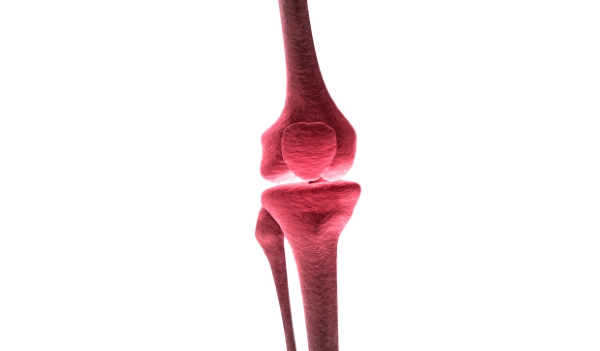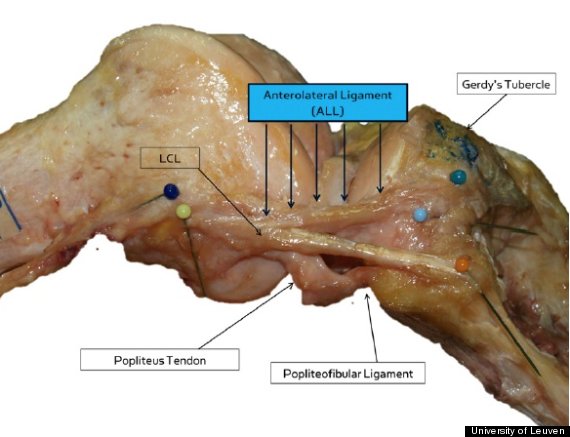New Knee ligament discovered- What does it mean?

What are the implications for Injury Treatment and surgery?
Knee collapses following surgery may be a thing of the past thanks to new research that has identified a previously unknown ligament in the knee – the anterolateral ligament (ALL).
The discovery brings hope to thousands of sportsmen and women forced to retire early due to knee injury as well as the many thousands in the UK who suffer from knee osteoarthritis. Doctors and physiotherapists are now hoping that the discovery will help them to better understand the knee so that new treatments and surgical procedures can be developed to improve care, speed recovery and help prevent recurrent injury.
Belgian orthopaedic surgeons Dr Steven Class and Dr Johan Bellemans identified the new body part through macroscopic examination of 41 knee joints. The ALL was present in all but one knee joint, leading to the conclusion that most humans have this ligament.

An image of a right knee following a complete dissection illustrates the new ligament.
(Photo courtesy of the University of Leuven)
Prior to the discovery of the ALL it was believed that the three bones that meet at the knee joint were connected by just four ligaments – two collateral ligaments on the sides of the knee and two cruciate ligaments inside the knee. The ligaments are tough bands of connective tissue that help hold the bones together and keep the knee stable. The ALL runs from the outer side of the thigh bone to the shin bone.
The four-year study, published in The Journal of Anatomy in August 2013, aimed to find out why some patients with anterior cruciate ligament (ACL) injury continue to suffer injury despite successful surgery to repair that ligament. The idea that there may be an additional ligament in the knee was not a new one. Claes and Bellemans, from the University of Leuven, considered work from the French surgeon Paul Segond, who suggested over 130 years ago that there was an additional ligament in the anterior of the knee.
The study indicates that the reason why some patients continue to feel discomfort and may suffer instability in the joint is because of an injury to the ALL. Now it has been identified, surgeons will be able to ensure that the ALL is repaired and no additional damage is caused to it through the surgical procedure itself.
Claes and Bellemans are now investigating new knee surgical techniques to put right ALL injury. For the 85,000 people in the UK who undertake knee replacement surgery each year there is hope that this new ligament could hold the key to getting back on their feet quicker. The identification of a new part of the body is significant to doctors and physiotherapists, who are hoping it may unlock the door to the mystery of recurrent injury and improve treatment and recovery for thousands.



